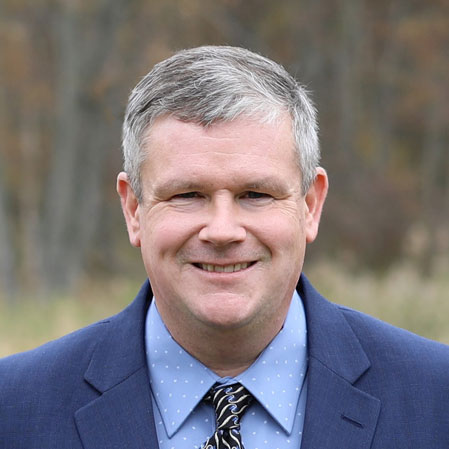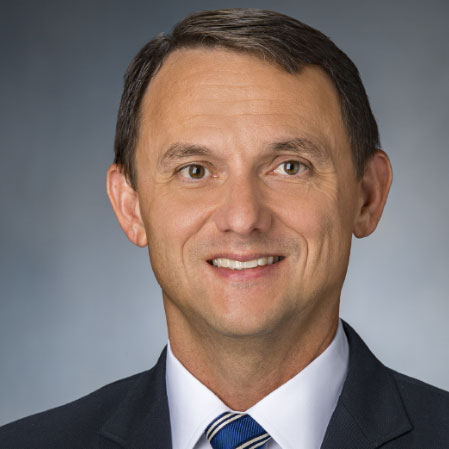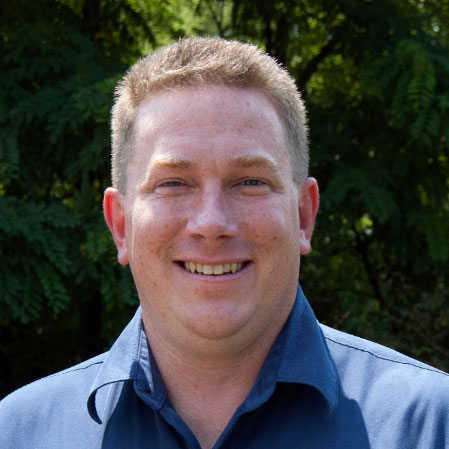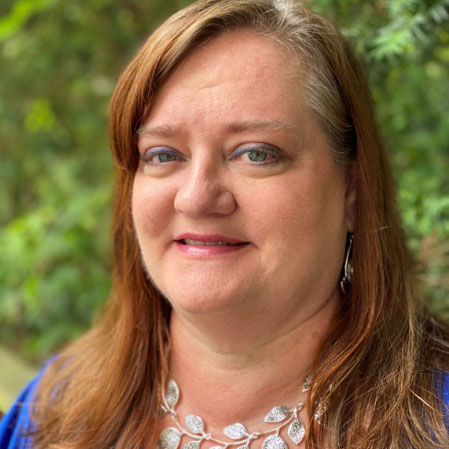By Bret Marchese, Director of Distribution Maintenance, Salt River Project
*Editorial Note: The following article appeared in the July/August issue of the UAA Newsline.
Disaster Strikes Puerto Rico
From mid-September to early October of 2017, Hurricane Maria brought extensive devastation and loss to Puerto Rico, Dominica, Saint Croix, and many other islands in the southeast and mid-Atlantic U.S. With 175 mph winds, Maria caused more than $91 billion in damage and more than 3,000 fatalities, making it the worst storm in history for the islands affected and, at the time, the deadliest Atlantic hurricane in nearly 20 years.
Just two weeks prior, Hurricane Irma—another category five hurricane—had passed north of Puerto Rico, causing extensive damage and outages. As Maria approached, approximately 80,000 Puerto Rico Electric Power Authority (PREPA) customers were still without power. When Maria made landfall on September 20th, the PREPA power grid was destroyed.
The island’s power grid was demolished, leaving all 3.4 million residents without electricity. Government officials estimated that it would take months to restore power and rebuild other infrastructure. On September 22nd, the entirety of Puerto Rico was declared a Federal Disaster Zone, initiating various emergency response efforts. Over the next few months, progress was being made toward restoring power, yet hundreds of thousands of people were still without.
Setting Up the Incident Command Structure
While PREPA worked to get power restored, the American Public Power Association (APPA) and Edison Electric Institute (EEI) began reaching out to utilities within its network to support the restoration effort. PREPA, the Federal Emergency Management Agency (FEMA), and the U.S. Army Corps of Engineers were underway with relief efforts. Still, the sheer size of the power restoration effort warranted involvement from utilities trained in disaster response and mutual assistance. As a member of APPA, Salt River Project (SRP) was contacted to provide support.
Puerto Rico is divided into seven regions, with utilities assigned to each area. By the time initial relief arrived, contractors on the ground had been working for more than 100 days. The situation was less than ideal due to a lack of a centralized command structure, and as a result, contractors were working separately without a unified direction. APPA and EEI worked together to establish a country-wide, unified incident command (IC) structure responsible for communications, overseeing logistics, material coordination, planning, and power-related disaster recovery efforts.
With the need to restore power efficiently and safely and recognizing that the task was greater than could be handled by a single IC entity, regional ICs were established across the island. Each IC team covered the following skill areas: planning, logistics, operations, safety, and communications. SRP was tasked with running the IC from the Carolina region east of the capital city, San Juan. While SRP did not have line workers on the ground in Puerto Rico, the team members who traveled there served in leadership roles, providing guidance for PREPA and other utilities. SRP’s leaders lead regional communications, damage assessments, material-needs assessments, and established restoration priorities. The leaders took responsibility for communicating with and educating teams how to work safely and efficiently to restore power as quickly as possible.
As one of these team members, I was called down to Puerto Rico for a 30-day shift as our Regional Incident Commander. Alongside other SRP team members and professionals from other participating utilities, we worked to ensure the regional team operated efficiently and provided the best guidance and coordination possible for the people executing restoration work every day.
Prioritizing Restoration Efforts and Safety
As materials for power restoration were being delivered by barge to the island, it was essential that orders for material and communications were correctly managed from the get-go. As SRP was an IC leader along with the other six regional IC teams, we would meet with the unified IC team daily to review progress and discuss safety issues, the number of crews working, critical circuit restoration completion, and estimated time to restoration (ETR).
A pivotal part of these meetings was coordinating the overall work effort to ensure that crews knew where they were supposed to be, what work needed to be done, and what materials were necessary to complete the work. Prior to establishing ICs, crews were working under limited guidance and, as a result, experienced overlap in their work areas that slowed down relief efforts and put workers in unsafe situations. Thanks to the IC approach, workers were able to focus on their assigned areas without overlap, helping to accelerate restoration while ensuring the safety of the workers from the utilities, contractors, and host utility.
Additionally, the SRP team was able to communicate the daily safety briefings and incidents to crews, which helped prevent safety incidents throughout their assigned region. Due to the widespread lack of power, crews could not continue working after dark since streetlights were either destroyed or unable to be powered. Driving safety was also a priority, as there were no working stoplights in major intersections. The SRP team, along with other safety representatives, would meet to discuss safety issues and communicate guidance to crews working across the region.
Applying Lessons Learned for the Future
Through the experience working in the IC structure, our team had learned the importance of separating traditional roles from an IC structure’s responsibilities. When disaster strikes, it’s essential for everyone involved to work together toward remediation. A variety of traditional roles were deployed to support restoration in Puerto Rico, including:
- Line crew supervisors who served as both sectional operations and logistics chiefs
- Line crew supervisors who oversaw daily work performed by utility crews and provided damage assessments and attention to overall worker safety
- Engineers who served as planning chiefs and also prioritized restoration
- Designers who assisted with damage assessments, mapping, switching requests, materials coordination, and new pole-planning work
- Warehouse managers who served as material leads
An effective IC structure must be defined and established early. Those that will be involved must be trained on ICS principles, roles, and responsibilities, given the disaster or emergency. IC structures should endeavor to have an early detection and implementation system in place to ensure that work is carried out in the most efficient, safe, and expedient way possible. Finally, an IC should be scalable, as not all who are part of the IC structure may be needed. In some instances, only a few team members may be required. Structures should be built to allow for rapid deployment with the right amount of team members for the incident at hand.
While complete power restoration extended until August of 2018, APPA members’ hard work contributed to a more expedient effort. Following its experiences in Puerto Rico, SRP has given considerable focus to establishing an IC structure within its own organization. Utilities across the country and beyond are encouraged to consider a similar approach—if they have not already—because when disaster strikes, efforts and investments in a structure that is ready to tackle the responsibility of rapid and efficient response are undoubtedly worthwhile.
About Bret Marchese
Bret Marchese joined Salt River Project in 1998. In his current role as Director of Distribution Maintenance, Marchese leverages more than 20 years of experience in maintenance, construction, technology, transmission, and distribution to ensure SRP’s distribution systems continue to provide reliable power for more than two million people in central Arizona. He holds a Bachelor of Business Administration degree from Dana College.

 Cody Woodward is the Membership Office Coordinator for the Utility Arborist Association, where she supports membership operations with a focus on organization and engagement. She blends her experience in organizing systems, interpreting data, and working closely with people to support both the day-to-day and big-picture needs of the UAA.
Cody Woodward is the Membership Office Coordinator for the Utility Arborist Association, where she supports membership operations with a focus on organization and engagement. She blends her experience in organizing systems, interpreting data, and working closely with people to support both the day-to-day and big-picture needs of the UAA. Jodie Braskich is an experienced professional in the utility industry with a strong background in supply chain and vegetation management. With over 18 years of industry expertise, Jodie continues to contribute her time and knowledge to the continuous improvement of the professional field of UVM. She has been a member of the UAA since 2007.
Jodie Braskich is an experienced professional in the utility industry with a strong background in supply chain and vegetation management. With over 18 years of industry expertise, Jodie continues to contribute her time and knowledge to the continuous improvement of the professional field of UVM. She has been a member of the UAA since 2007. A winner of the David H Nabi Award for dedication and service, Dr. Robert Vanderhoof earned his Ph.D. from the College of Forest Resources at Mississippi State University in 1995. A veteran natural resource manager, Robert spent 15 years as Florida’s Deer Management Section Chief during which time he coordinated range management activities across Florida’s seven-million-acre wildlife management area system.
A winner of the David H Nabi Award for dedication and service, Dr. Robert Vanderhoof earned his Ph.D. from the College of Forest Resources at Mississippi State University in 1995. A veteran natural resource manager, Robert spent 15 years as Florida’s Deer Management Section Chief during which time he coordinated range management activities across Florida’s seven-million-acre wildlife management area system.
 Cindy is the Senior Director, Vegetation Management Services and she manages departments responsible for maintaining vegetation in REC’s rights-of-way with the goal of reducing exposure of the electric grid to tree caused outages while encouraging habitat and species diversity. Cindy also has a consulting business, EcoAcumen, LLC that focuses on residential, commercial and government clients.
Cindy is the Senior Director, Vegetation Management Services and she manages departments responsible for maintaining vegetation in REC’s rights-of-way with the goal of reducing exposure of the electric grid to tree caused outages while encouraging habitat and species diversity. Cindy also has a consulting business, EcoAcumen, LLC that focuses on residential, commercial and government clients. Kimberly Laing has had an exciting career in the energy industry, gaining valuable experience in various areas for almost 20 years. During her career, she has worked with numerous customers worldwide in a diverse cross-disciplined technical environment. She has extensive experience working with utilities, asset owners, equipment manufacturers, and consultants to facilitate transmission and distribution projects. Kimberly is particularly passionate about Utility Vegetation Management and its vital role in delivering safe and reliable power.
Kimberly Laing has had an exciting career in the energy industry, gaining valuable experience in various areas for almost 20 years. During her career, she has worked with numerous customers worldwide in a diverse cross-disciplined technical environment. She has extensive experience working with utilities, asset owners, equipment manufacturers, and consultants to facilitate transmission and distribution projects. Kimberly is particularly passionate about Utility Vegetation Management and its vital role in delivering safe and reliable power. Josh Beaver is currently senior vice president of Eocene Environmental Group, a utility vegetation management (UVM) consulting and operations firm. Josh has more than two decades of experience within the UVM industry. He is currently responsible for relationship management and oversight of long-term UVM contracts throughout the United States and Canada. He considers customer and community communication to be vital aspects of his role, and he has a proven record of success working with utilities.
Josh Beaver is currently senior vice president of Eocene Environmental Group, a utility vegetation management (UVM) consulting and operations firm. Josh has more than two decades of experience within the UVM industry. He is currently responsible for relationship management and oversight of long-term UVM contracts throughout the United States and Canada. He considers customer and community communication to be vital aspects of his role, and he has a proven record of success working with utilities. Sam joins the UAA crew with over a decade of non-profit experience behind her. As our Partnership Coordinator, her focused efforts on building relationships with diverse funders will include crafting proposals, cultivating connections, and cohesively earning dedicated sponsors to support the sustainability of UAA substantially and empowering our programs. Well equipped with professional skills which include program development, public speaking, proposal writing, donor relations, working with diverse stakeholders, coalition building, and public-facing service. Sam’s educational background includes a BS in Animal Ecology with a minor in Animal Science, and a MA in Philanthropy and Non-profit Development.
Sam joins the UAA crew with over a decade of non-profit experience behind her. As our Partnership Coordinator, her focused efforts on building relationships with diverse funders will include crafting proposals, cultivating connections, and cohesively earning dedicated sponsors to support the sustainability of UAA substantially and empowering our programs. Well equipped with professional skills which include program development, public speaking, proposal writing, donor relations, working with diverse stakeholders, coalition building, and public-facing service. Sam’s educational background includes a BS in Animal Ecology with a minor in Animal Science, and a MA in Philanthropy and Non-profit Development. Sara Dreiser is a Senior Program Manager with ComEd. She works with a team to oversee ComEd’s routine cycle maintenance and ComEd’s interruption investigation programs. She has been working in the Vegetation Management industry for close to 15 years.
Sara Dreiser is a Senior Program Manager with ComEd. She works with a team to oversee ComEd’s routine cycle maintenance and ComEd’s interruption investigation programs. She has been working in the Vegetation Management industry for close to 15 years. Matt Goff is a Transmission Vegetation Manager at Georgia Power Company. He lives in Brookhaven, GA with his wife, two daughters, and the family’s two dogs Sam, and Payton. For leisure, he enjoys sports with his family, bird hunting, and salt-water fishing.Matt holds a BSFR from the University of Georgia in Forest Resource Management and he graduated in 1997. He has worked in the vegetation management industry for 26 years. His work experience includes six years as a procurement forester for a forest products manufacturer, and 20 years in the utility vegetation management industry with Georgia Power.
Matt Goff is a Transmission Vegetation Manager at Georgia Power Company. He lives in Brookhaven, GA with his wife, two daughters, and the family’s two dogs Sam, and Payton. For leisure, he enjoys sports with his family, bird hunting, and salt-water fishing.Matt holds a BSFR from the University of Georgia in Forest Resource Management and he graduated in 1997. He has worked in the vegetation management industry for 26 years. His work experience includes six years as a procurement forester for a forest products manufacturer, and 20 years in the utility vegetation management industry with Georgia Power. Brandon graduated from Minnesota State University–Mankato with a B.S. in Geography. Brandon has been with Rainbow Tree Company since 2009 and has gained experience in several roles, including Business Developer for our utility products division, GIS Tree Inventory Analyst, and Technical Arborist. Brandon has been the Director of VM Services, the fastest growing division inRainbow Tree Company, since 2012.
Brandon graduated from Minnesota State University–Mankato with a B.S. in Geography. Brandon has been with Rainbow Tree Company since 2009 and has gained experience in several roles, including Business Developer for our utility products division, GIS Tree Inventory Analyst, and Technical Arborist. Brandon has been the Director of VM Services, the fastest growing division inRainbow Tree Company, since 2012. Jim Neeser is a business developer for the Davey Resource Group, a division of the Davey Tree Expert Company. Jim primarily works with utility companies to provide innovative and customized solutions. Jim earned his AA from Vermillion Community College in 1997 and his BS in Forestry with an emphasis on Hydrology and Soils from the University of Minnesota in 2000. Jim is an ISA Certified Arborist with the Utility Specialist endorsement. Jim has been involved in the UAA training committee for nearly a decade as a past chairman and is currently the treasurer and Champion of the finance committee. Jim spent his first 7 years in the industry as a field arborist in the commercial and utility markets. The last 10 years, Jim has been working with utility companies to enhance their Integrated Vegetation Management programs. Jim’s other interests include spending time with his family, sports, hiking, fishing and coin collecting. Jim is also active with the Boy Scouts of America as an Eagle Scout. Jim lives in Forest Lake, MN with his wife and 2 children.
Jim Neeser is a business developer for the Davey Resource Group, a division of the Davey Tree Expert Company. Jim primarily works with utility companies to provide innovative and customized solutions. Jim earned his AA from Vermillion Community College in 1997 and his BS in Forestry with an emphasis on Hydrology and Soils from the University of Minnesota in 2000. Jim is an ISA Certified Arborist with the Utility Specialist endorsement. Jim has been involved in the UAA training committee for nearly a decade as a past chairman and is currently the treasurer and Champion of the finance committee. Jim spent his first 7 years in the industry as a field arborist in the commercial and utility markets. The last 10 years, Jim has been working with utility companies to enhance their Integrated Vegetation Management programs. Jim’s other interests include spending time with his family, sports, hiking, fishing and coin collecting. Jim is also active with the Boy Scouts of America as an Eagle Scout. Jim lives in Forest Lake, MN with his wife and 2 children. Craig works for Pacific Gas and Electric as a Principal Program Manager in Land Management. His career spans 30 years in the utility industry serving numerous roles. He is an ISA Certified Arborist, Utility Specialist, and hold his TRAQ and is a TCIA Certified TreeCare Safety Professional. Craig has been engaged and involved in the UAA for many years, starting back in 2008. He then wanted more so he ran for UAA President and was elected in 2014. Today, Craig looks back over his 30-year career and wouldn’t change a thing, he’s made life-long friends and considers many as mentors. He also claims he would not be where is in his career if it weren’t for these people, and pledges to pay it forward to support others in their success.
Craig works for Pacific Gas and Electric as a Principal Program Manager in Land Management. His career spans 30 years in the utility industry serving numerous roles. He is an ISA Certified Arborist, Utility Specialist, and hold his TRAQ and is a TCIA Certified TreeCare Safety Professional. Craig has been engaged and involved in the UAA for many years, starting back in 2008. He then wanted more so he ran for UAA President and was elected in 2014. Today, Craig looks back over his 30-year career and wouldn’t change a thing, he’s made life-long friends and considers many as mentors. He also claims he would not be where is in his career if it weren’t for these people, and pledges to pay it forward to support others in their success. Erin Creekmur has been in the UVM industry for over 20 years. After graduating with a Bachelors in Botany from Northern Arizona University she relocated to Northern California to start her professional career. Starting as a consulting utility pre-inspector with Western ECI she quickly moving up to the ranks to Supervisor under the tutelage of folks like Nelson Money. In 2004, Erin joined PG&E as a Quality Assurance Auditor for the VM program. Eventually becoming the Program Manager for the North Coast Division, helping stand up the beginnings of CEMA as the Emergency Drought Response Initiative Lead for the Enhanced Inspection & Mitigation Program, targeting off-cycle hazard trees across the system. In 2015, Erin moved back to her home state of Arizona and took the role of Division Supervisor with Arizona Public Service, managing both transmission and distribution UVM programs out of the Flagstaff area. As part of her role with APS Forestry Fire and Resource Management Department, Erin had responsibility for creating a Hazard Tree Mitigation program. maintaining APS’s ROW Stewardship Accreditation, FERC reporting, and the Transmission Lidar program. In 2021, Erin took a shift in her career and is now Supervising the Customer Construction and Design team for APS, expanding her overall understanding of the Utility industry. Erin continues to maintain her ISA Utility Specialist Certification and TRAQ. She has also completed certifications in both Six Sigma and Lean Sigma Green Belt through accredited universities. In addition to her current service on the UAA Board of Directors, Erin spent the last 6 years as an officer with the Arboretum at Flagstaff Board of Directors. In her free time, you can find Erin in the woods taking pictures of native plants and beautiful western landscapes.
Erin Creekmur has been in the UVM industry for over 20 years. After graduating with a Bachelors in Botany from Northern Arizona University she relocated to Northern California to start her professional career. Starting as a consulting utility pre-inspector with Western ECI she quickly moving up to the ranks to Supervisor under the tutelage of folks like Nelson Money. In 2004, Erin joined PG&E as a Quality Assurance Auditor for the VM program. Eventually becoming the Program Manager for the North Coast Division, helping stand up the beginnings of CEMA as the Emergency Drought Response Initiative Lead for the Enhanced Inspection & Mitigation Program, targeting off-cycle hazard trees across the system. In 2015, Erin moved back to her home state of Arizona and took the role of Division Supervisor with Arizona Public Service, managing both transmission and distribution UVM programs out of the Flagstaff area. As part of her role with APS Forestry Fire and Resource Management Department, Erin had responsibility for creating a Hazard Tree Mitigation program. maintaining APS’s ROW Stewardship Accreditation, FERC reporting, and the Transmission Lidar program. In 2021, Erin took a shift in her career and is now Supervising the Customer Construction and Design team for APS, expanding her overall understanding of the Utility industry. Erin continues to maintain her ISA Utility Specialist Certification and TRAQ. She has also completed certifications in both Six Sigma and Lean Sigma Green Belt through accredited universities. In addition to her current service on the UAA Board of Directors, Erin spent the last 6 years as an officer with the Arboretum at Flagstaff Board of Directors. In her free time, you can find Erin in the woods taking pictures of native plants and beautiful western landscapes. Fallon is a Utility Arborist and Executive Director of the Utility Arborist Association. Prior to his current role he was responsible for leading vegetation management programs across several upper Midwest states on behalf of a large investor-owned utility. He’s also been an adjunct professor at the University of Wisconsin-Stevens Point, where he facilitated the
Fallon is a Utility Arborist and Executive Director of the Utility Arborist Association. Prior to his current role he was responsible for leading vegetation management programs across several upper Midwest states on behalf of a large investor-owned utility. He’s also been an adjunct professor at the University of Wisconsin-Stevens Point, where he facilitated the  Renée is our Member Services Manager. She is available to UAA members for questions on committee assignments, educational opportunities, scholarships, CEU questions, and any other assistance.
Renée is our Member Services Manager. She is available to UAA members for questions on committee assignments, educational opportunities, scholarships, CEU questions, and any other assistance. Diona has been with the Utility Arborist Association (UAA) since December 2015 and has worked in various capacities within the organization.
Diona has been with the Utility Arborist Association (UAA) since December 2015 and has worked in various capacities within the organization.